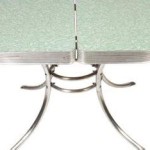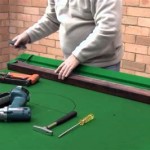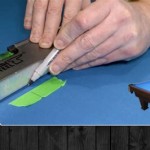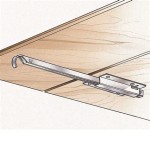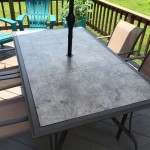Kids Painted Table And Chairs: A Creative and Functional Project
Painting furniture can be a rewarding project, especially when involving children. Transforming a plain table and chairs into a vibrant, personalized set provides a space for creativity, learning, and family time. This article will explore the benefits, preparation steps, painting techniques, and safety considerations involved in a kids painted table and chairs project.
Benefits of a Kids Painted Table and Chairs Project
Engaging children in a furniture painting project extends beyond mere decoration. It offers a multitude of developmental and practical advantages. Participation fosters creativity, enhances fine motor skills, and provides a sense of ownership and accomplishment. Furthermore, it often presents an opportunity to repurpose existing furniture, contributing to sustainability and reducing waste.
Creativity is significantly stimulated as children select colors, patterns, and designs for their furniture. The process allows for imaginative expression and encourages them to think outside the box. Visualizing a finished product and then taking tangible steps to achieve it cultivates problem-solving skills as well.
The act of painting itself is beneficial for developing fine motor skills. Controlling a paintbrush, staying within lines, and applying even coats require precision and coordination. These physical actions contribute to improved hand-eye coordination and dexterity, skills that are essential for various other activities, such as writing and drawing.
When children are involved in the creation of something, they develop a stronger connection to it. Painting their own table and chairs gives them a sense of ownership and pride. This sense of ownership can translate into increased responsibility for maintaining the furniture, teaching them valuable lessons about caring for their belongings and respecting their environment.
Repurposing old or unused furniture items is an environmentally conscious choice. Instead of discarding a table and chairs, children can transform them into a new, functional set. This teaches them the importance of upcycling and conservation, promoting sustainable practices from a young age. Furthermore, it can be a cost-effective alternative to purchasing new furniture, especially if the existing set is in good structural condition.
Preparation for Painting Table and Chairs
Proper preparation is critical for achieving a long-lasting and aesthetically pleasing paint finish. This involves cleaning, sanding, priming, and assembling the necessary supplies. Thorough preparation ensures the paint adheres properly to the surface and minimizes potential imperfections.
The first step is to thoroughly clean the table and chairs. This removes any dirt, grease, or grime that could interfere with paint adhesion. A mild detergent and water solution is usually sufficient. A scrub brush can be used to dislodge stubborn debris. After washing, the furniture must be allowed to dry completely before proceeding to the next step. Avoid using harsh chemicals or abrasive cleaners, as these could damage the surface of the furniture.
Sanding is essential for creating a smooth, even surface for painting. It also helps to roughen up the existing finish, providing better adhesion for the new paint. A medium-grit sandpaper (around 120-150 grit) is generally suitable for this purpose. Sand in the direction of the wood grain, if applicable, and pay close attention to areas with existing imperfections, such as chips or scratches. After sanding, use a tack cloth or damp cloth to remove any sanding dust. Sanding dust can cause the paint to bubble or peel, so it is important to eliminate it completely.
Priming is the application of a base coat that prepares the surface for the topcoat of paint. Primer helps to seal the surface, create a uniform color base, and improve paint adhesion. Use a primer specifically designed for the type of material the table and chairs are made of (e.g., wood, metal, plastic). Apply the primer in thin, even coats, following the manufacturer's instructions. Allow the primer to dry completely before proceeding to the painting stage. Priming is especially important for bare wood or surfaces with significant imperfections.
Gathering all necessary supplies before starting the painting process will streamline the project and prevent interruptions. This includes paint, paintbrushes, rollers (for larger surfaces), painter's tape, drop cloths, containers for paint, mixing sticks, and appropriate safety gear (gloves, mask). Having everything readily available ensures a smooth and efficient painting experience. Selecting high-quality paint and brushes will also contribute to a better finished product.
Painting Techniques and Safety Considerations
Applying the paint effectively and safely is essential for a successful project. This involves selecting appropriate paint types, using proper painting techniques, and ensuring adequate ventilation and protection.
Choosing the right type of paint is crucial for achieving the desired look and durability. Water-based acrylic paints are generally recommended for children's furniture due to their low odor, easy cleanup, and safety. They are also available in a wide range of colors. Oil-based paints offer greater durability but require more ventilation and careful disposal of used materials. Consider the specific use of the table and chairs when selecting the paint. If the furniture will be subject to heavy use, a more durable paint may be necessary.
Proper painting techniques are key to achieving a smooth, even finish. Apply the paint in thin, even coats, avoiding drips and runs. Use a brush for detailed areas and a roller for larger, flat surfaces. Allow each coat to dry completely before applying the next. Multiple thin coats are preferable to one thick coat, as they are less likely to drip or peel. For intricate designs, consider using stencils or painter's tape to create clean lines. Encourage children to practice their painting technique on a scrap piece of wood or cardboard before applying it to the furniture.
Adequate ventilation is essential when painting, especially when using paints with strong odors. Open windows and doors to allow for airflow. Consider using a fan to circulate the air. If working indoors, ensure the area is well-ventilated. For projects involving paints with potentially harmful fumes, consider using a respirator mask to protect yourself and the children. Always follow the manufacturer's instructions regarding ventilation and safety precautions.
Protecting the surrounding area is crucial to prevent paint spills and splatters. Cover the floor with drop cloths and use painter's tape to mask off any areas that should not be painted, such as trim or hardware. Wear old clothes or painting overalls to protect your clothing. Provide children with aprons or smocks to prevent paint from getting on their clothes. Clean up any spills immediately with a damp cloth and appropriate cleaning solution.
Proper storage and disposal of paint and painting materials is essential for safety and environmental responsibility. Store leftover paint in airtight containers, away from heat and direct sunlight. Dispose of empty paint cans and used painting materials according to local regulations. Do not pour paint down drains or into the environment. Recycle paint containers whenever possible. Teach children about the importance of responsible waste disposal.
Supervision is paramount when children are involved in a painting project. Ensure they are using the paint and tools safely and following all instructions. Provide guidance and assistance as needed. Encourage them to take breaks and stay hydrated. Make the project a fun and positive experience by celebrating their creativity and accomplishments.

Create An Activity Table Set For Kids With Mismatched Furniture Diy Beautify Creating Beauty At Home

Kids Table And Chairs Makeover Confessions Of A Serial Do It Yourselfer

Colorful Painted Child S Table And Chairs

Kids Table Makeover Confessions Of A Serial Do It Yourselfer

Kids Table Makeover Confessions Of A Serial Do It Yourselfer

Painting A Children S Table Patina Paint

Kids Play Chair Whimsical Painted Furniture Table Tea Party And Personalized

Kids Table Makeover Confessions Of A Serial Do It Yourselfer

Colorful Painted Child S Table And Chairs

Painted Children S Furniture Foter Whimsical Childrens Painting Kids
Related Posts

